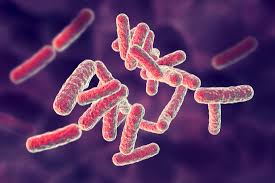What Might be Lurking in Your Water?
You may find there might be microscopic invaders such as bacteria and parasites lurking in your water supply. Educating yourself on some of the most prevalent dangers could be important to your health.
 LEGIONELLA
LEGIONELLA- Legionella bacteria is responsible for Legionaires’ disease, which is a flu-like illness that primarily affects the lungs. Coughing and shortness of breath are the chief symptoms, but other flu-like ailments such as vomiting and muscle aches can also be common. The main way in which people are infected with Legionella is through contaminated water droplets.
- SALMONELLA

- This particular bacteria type is easily transmittable, and can even spread from animals to people. Mainly pet turtles, lizards and snakes can carry it and transmit it to their owners. Once you are infected you might experience severe gastrointestinal symptoms. These may include nausea, diarrhea, vomiting and stomach cramps.
- E. COLI

- E. Coli is a common form of bacteria found in the digestive systems of living organisms, there are certain strains that can cause illnesses when introduced into drinking water supplies. This is often caused by insufficient treatment of wastewater or being carried into freshwater by storm runoff. Consuming water that has been contaminated with E. Coli can lead to severe abdominal cramping, vomiting and diarrhea.
- PSEUDOMONAS

- This highly contagious pathogen can cause a wide range of illnesses, from pneumonia to urinary tract infection to sepsis. It is responsible for more than 50,000 documented infections in the United States every year. This is due to the fact that is extremely common and can be found in many plumbing systems and moist environments.
- GIARDIA LAMBLIA

- This is a parasite that people can pick up by drinking unclean water. It is highly contagious and can be spread even when the carrier exhibits no outward signs of infection. If someone shows symptoms of being infected, although you may experience diarrhea, stomach cramps, and a possible low fever.

![3670104[1]](https://superiorwater.com/wp-content/uploads/2021/03/36701041-150x150.png)
![WQA[1]](https://superiorwater.com/wp-content/uploads/2021/03/WQA1.png)
![bbb-accredited-business-symbol-png-logo-17[1]](https://superiorwater.com/wp-content/uploads/2021/03/bbb-accredited-business-symbol-png-logo-171.png)
![800px-Flag_of_the_United_States[1]](https://superiorwater.com/wp-content/uploads/2021/03/800px-Flag_of_the_United_States1.png)